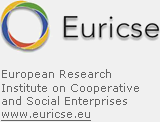Symposium
Emotions, Natural Selection and Rationality
Organized by:
Robins School of Business of the University of Virginia
Jepson Alumni Center
University of Richmond
Richmond, Virginia
March 21 - 22, 2009
Synopsis
The symposium focuses on how the emotions are related to morality, on one hand, and to rationality, on the other. The recent discovery of the mirror neuron system, conceivably the basis of sympathetic emotions, highlights the biological basis of moral and rational behavior. Adam Smith, 250 years ago, highlighted in his book, The Theory of Moral Sentiments (1759), how morality is ultimately based on sympathetic sentiments. On the other hand, Charles Darwin stressed the biological basis of morality. This symposium brings together scholars in economics, biology, psychology, and other disciplines to evaluate and debate these issues in light of recent discoveries in neuroscience.
Convenors
Elias Khalil ([email protected])
Department of Economics, University of Richmond and Monash University
Jonathan Wight ([email protected])
Department of Economics, University of Richmond
Sponsor
The E. Claiborne Robins Distinguished University Chair, University of Richmond
Supporters
Robins School of Business, University of Richmond
Jepson School of Leadership Studies, University of Richmond
Faculty of Business and Economics, Monash University
Venue
Jepson Alumni Center, University of Richmond, Richmond, Virginia, USA
Official web site
Please check the symposium's official web site to see the full programme and for updates and further details.
Abstracts
Paul J. Zak: “The Moral Molecule”
Abstract: In The Theory of Moral Sentiments, Adam Smith argued that “fellow feeling” or empathy was the basis for moral behaviors. Recent neuroeconomics experiments have shown that Smith was correct. These studies have identified the peptide oxytocin as the moral molecule. This talk reviews these experiments and draws implications for economics, business organization, and public policy.
Elias Khalil: “The Mirror-Neuron Paradox: How Far is Sympathy from Compassion, Indulgence, and Adulation?”
Abstract: How could the same mirror-neuron system (MNS) be involved in understanding and reflexivity—whereas understanding attenuates, while reflexivity escalates the emotions? These two functions of sympathy is the core of the debate between Adam Smith and David Hume on the subject. This paper promises to solve the paradox by distinguishing two axes of decision making: rationality and niyya. The former asks whether the action is efficient or suboptimal, while niyya (a word from Arabic) asks whether the intention is benevolence or malevolence (ill-will). The solution shows how group solidarity differs from altruism and fairness; how revulsion differs from squeamishness; how sympathy differs from adulation; how ill-will differs from weak will; and how racial hatred differs from racial segregation.
Istvan Molnar-Szakacs: “The Human Mirror Neuron System – from Actions to Morality”
Abstract: Work in macaques has provided direct evidence of a neural system for understanding the actions of others, as well as the intentions behind those actions. The firing pattern of neurons within this system appears to ‘mirror’ an action performed and seen, linking action to perception and actor to observer. Indirect evidence acquired through various neuroimaging techniques, including functional Magnetic Resonance Imaging (fMRI) and Transcranial Magnetic Stimulation (TMS) indicates that a similar system, termed the Mirror Neuron System (MNS) also exists in the human brain. This fronto-parietal neural system, which seems to be intimately connected to both sensory and higher-level frontal regions, as well as the emotion centers of the brain has been implicated in a variety of functions including imitation learning, non-verbal gestural communication, music perception and self-perception. In this paper I will discuss some evidence suggesting that this system for linking perception and action, observer and actor, may be involved in empathic concern, the capacity to recognize or understand another's state of mind or emotion. From this evidence, I will try to make a case that the human MNS may serve as a neural substrate for tolerance and compassion – the active desire to alleviate another's suffering. I will also discuss implications for ingroup – outgroup relations and morality.
Eric Schliesser: "On the Darwinian Afterlife of The Smithian Distinction Between Natural and Moral Sentiments, and Their Rationality"
Abstract: The distinction between (instinctive) natural and (cultivated) moral sentiments is of utmost importance in Smith's The Theory of Moral Sentiments. It is almost always ignored (but see Carrasco 2005). This is no surprise because Smith does not call attention to the distinction and the title of his book only mentions the moral sentiments. The distinction is very important in Smith's moral philosophy because it helps underwrite the two-fold nature of his ethical/political theory in (a) very thin universal moral code, based on common humanity (and the wide scope of sympathy, even with other animals and nature) and the proper functioning of resentment, and (b) the application of more localized moral norms (based on cultural evolution of sets of rules). In this paper I, first, explore the separate rationality conditions of the natural and moral sentiments. For Smith, their rationality is determined by historical (and distinctive selective) processes. In the second part of the paper, I explore how Darwin's use of 'social instincts' in opposition to J.S. Mill (who had transformed the Smithian conceptual apparatus) elides Smith's distinction. While Darwin saw deeper into the nature of selection than Smith, it is by no means obvious that the Darwinian social instincts can provide the conceptual resources such that we would call them "moral."
Sarah F. Brosnan: “An Evolutionary Perspective on the Moral Emotions”
Abstract: Moral behavior and concern for others is one of the traits that humans believe set us apart as different. However, it is very likely that humans are not the only animal species to possess these characteristics. Functionally, it seems unlikely that these traits evolved de novo in humans, and practically, work from behavioral biology and neuroscience has indicated that some of these traits – or at least, their precursors – are present in other species, particularly the non-human primates. Darwin would clearly approve of this approach; in his less well read book “On the Expression of Emotions in Man and Animals” indicates clear evolutionary links between the emotions of animals – including sympathy – and those of humans. Smith, too, indicates sympathy with this view in some of his writings. Others, however, may be concerned about whether non-human species could truly show precursors to humans’ moral behavior, or how we can legitimately identify these as such. I will focus primarily on evidence from behavioral biology to argue that there is a basis for the moral emotions in nonhuman primates and, hence, an understanding of how this sense evolved to the form we see in humans.
David Haig: “On Intrapersonal Conflict”
Abstract: Humans have evolved general-purpose problem-solving mechanisms, and the ability to learn from others, to compensate for the limitations of hard-wired adaptations. We are rational, cultural, and instinctive beings. Sometimes these alternative sources of behavioral guidance promote different choices. Instinct summarizes the wisdom of past natural selection and recommends actions that have worked before under similar circumstances. Culture also summarizes wisdom from the past and can respond much faster than gene sequence to environmental change, but, from a gene’s eye view, has the disadvantage of evolving by rules that need not promote genetic fitness. Reason can respond to unique features of the current situation and to weak selective forces, but may lack the historical judgment of either instinct or culture. Our passions, both positive and negative, are the carrots and sticks employed by genes to mold our actions to their ends. Reason may be a slave to the passions, but reason pursues pleasures as ends in themselves rather than as means to an end.
Daniel Houser: “Doing and Saying: Does Transparent Leadership Really Matter?”
Abstract: Does transparency change behavior? We address this issue by means of a public goods experiment featuring a leader whose only power is sending a non-binding contribution suggestion. Transparency is affected by making the leader’s words and actions common knowledge. Co-operation of leader and followers flourishes in a transparent setting relative to institutions with varying degrees of opacity.








